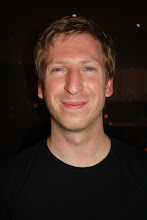We begin the day with a fascinating meeting with the Center for Cultural Heritage and preservation in Bethlehem (CCHPB)
The meeting starts a little awkwardly as we explain why we are there but soon not only picks up, but catches fire, as we get into some good intellectual debate.
The CCHPB works rehabilitating old historic buildings, rennovating them, and give it to owner rent free on the condition that they allow a public body to use the building for 8 years. After this time they can continue this public body and charge them rent, or decide on a new use of their own choosing.
We soon get into the importance of building a historical narrative, tying the Palestinians to their land. Simply put Palestinians national identity is largely tied to an oral storytelling culture, the traditional Palestinian dress (which varies between each region) and cultural nuances between villages.
We talk about the importance of writing down these things, recording them for posterity and engaging the Palestian people with them. Israel has a very embedded tradition of the land being the people, and the people belonging to the land. We find that Palestinians have the same connection to the land, but it is expressed orally and culturally, not written down or recorded. One off shoot of this is that even deeds for land ownership are often out of date.
When we go to our next interview in the Mahkrour it is with a family that had stopped and chatted to me on a previous visit. The mother in the family enthusiastically repeats the same stories that we have heard from other farmers, over the top of everyones conversation! As the same issues face all of these farmers we spend our time trying to investigate more personnal effects of the occupation.
In the instance of this family one of their personnal stories is a powerful one. When their son was 4 years old, a time he remebers, the IDF were shelling the area and they hid under the bed fearing for their lives, this continued for three days. Now the boy, nine years old, has grey in his hair from stress, and doesn't sleep well. There is always a positive spin to the stories. After the end of the war the family took the sandbags they once used to protect them from Israeli bullets and used the sand from inside to rebuild their own "castle" (farming hut) on the mountain of Al Mahkrour.
The second interview is in the town of Beit Jala, and we discuss many broader issues, and start to hear more about the importance of land ownership. It's a compicated issue, and fundamental to the plight, not only of these farmers, but many people in the Palestine.
According to a number of old laws, if land is un-used for 3 years it falls into the hands of the adminstrative state (Israel) to be taken care of. In many cases the wall prevents people form using their land, and it ultimately becomes the property of the Israeli government.
When the wall is built between Beit Jala and Al Mahkrour mountain there will be an access gate. Access to farmlands will be granted if farmers can prove ownership of their peice of land.
In the event, we realise this is nearly impossible.
Most deeds are in the name of grand fathers of great grandfathers, not the current owners. These need to be updated, but at a cost beyond the means of any of the farmers we talk to. Another problem is that to register the lands you must first contact everyone who has inherited land since the original owner. This means if a father gives lands to two sons, both sons must take the original document, agree the new boundaries and draw up new deeds. Most farmers land is inherited from great grandfathers, and the land is split between as many as 20 modern owners- all need to be contacted for a successful application.
Because of the occupation, many are outside of the country.
Wednesday, August 08, 2007
Subscribe to:
Comments (Atom)
